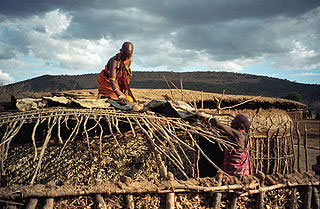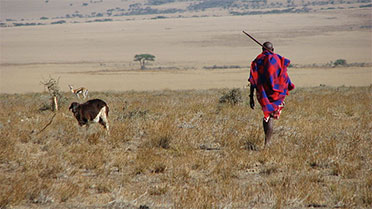A traditional economy is an economic system where economic decisions and the allocation of resources are based on habits or rituals. Economic activities of a traditional economy are also rooted in the habits, rituals, or customs of the culture; these activities are mostly centered toward the family unit. Activities such as farming, hunting and gathering, and fishing are done the same way from generation to generation.
In traditional economies, technology is scarcely used, if at all. The work is done with manmade, and sometimes primitive, tools. Men and women also have distinct roles in these economic activities.
While traditional economies are not as common today, they were very common in the past. Today, cultures with traditional economies can be found in developing regions of Africa, Asia, and South America.
The Maasai people, located in Kenya and Tanzania in East Africa, are a culture with a traditional economy. Once nomadic herders and warriors, the Maasai have become a more settled culture that has learned to farm the deserts and scrublands of the region.
Cattle are the most important resource of the Maasai. Cattle are used for food, clothing, and trade. The wealth of each man is determined by how many cattle he owns. In the image below, a Maasai man watches the animals grazing in the distance.
Look at the two images below of the Maasai people at work. What do the images reflect about the roles of men and women in the Maasai culture? Males and females have very distinct roles within the culture. Click on each image to learn more.
Interactive popup. Assistance may be required.

Interactive popup. Assistance may be required.

Click on the link below to watch the video clip and learn more about the Maasai. Answer the questions that follow in your
 tool.
tool.
 Maasai Expeditions
Maasai Expeditions
-
Why are cattle so important to the Maasai culture?
Interactive popup. Assistance may be required.
Click here for possible answers.
- The modernization of Africa has become a challenge for the Maasai. What aspect(s) of modernization did you observe in the video as a challenge for the Maasai culture?
Interactive popup. Assistance may be required.
Click here for possible answers.
- Based on the modernization of regions in Africa, what do you predict will happen to the traditions of the Maasai and their economic activities?
Interactive popup. Assistance may be required.
Click here for possible answers.
It is important to note that some of the Maasai have started to move away from the traditional economic activities. Some groups are moving from subsistence agriculture to selling milk and milk products, owning restaurants, and selling traditional herbs and medicines. Some have become employed in neighboring regions.
Sources of images used for this section as they appear, top to bottom:
- Ludzie 06, Jerry Strzelecki, Wikipedia
- Maasai man, Eastern Serengeti, October 2006



